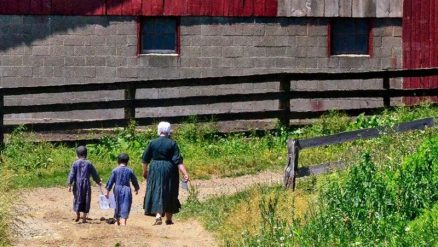How are Amish communities organized?

Gene Wintersole photo
- Amish 101
- Amish 101
- 15605
The Amish people are a sect of Anabaptists who believe in living a simple life and following the teachings of Jesus Christ. They were named after Jacob Amman, who was a Swiss Anabaptist leader. Amish settlers, fleeing religious persecution in Europe, began to immigrate to North America in the 17th century.
Like-minded Amish groups began to affiliate with one another in North America and settled in parts of Pennsylvania, Ohio, Indiana and Canada. Each settlement would eventually split into different affiliations, settlements and church districts over time as a result of disagreements within the Anabaptist community over issues such as shunning and baptism. Some members believed that shunning should be practiced more strictly, while others felt that it should be less severe.
In Amish society, the church and community leaders play a significant role in maintaining order and guiding the community. The church serves as the center of Amish life, with weekly services held in members' homes. The ministers, who are chosen by the congregation, lead these services and provide spiritual guidance to members. They are also responsible for enforcing church rules and discipline, which can include shunning members who violate community norms.
Community leaders, known as bishops or deacons, work alongside ministers to oversee day-to-day operations of the community. They make decisions regarding issues such as land use and education policies. Additionally, they may serve as mediators in disputes between members.
The Amish community is known for its unique and traditional practices that shape their way of life. One of the most significant customs is the use of horse-drawn buggies instead of cars. They also dress in plain clothing with women wearing head coverings and long dresses. The Amish believe in living a simple life without modern technology, which means they do not have electricity or telephones in their homes. Instead, they use lamps and candles for lighting, and they rely on landline phones located outside their homes or at community phone booths. The Amish value hard work, family, and community above all else and prioritize these values in their daily lives.
Modern challenges to Amish community organization and preservation include the increasing pressures of modern society. As the outside world continues to encroach on their way of life, Amish communities struggle to maintain their traditional values and customs. One of the biggest challenges is the availability of technology, which can lead to a loss of community cohesion and identity. The rise of social media also poses a threat, as it can expose Amish youth to outside influences and temptations.
Additionally, as land prices increase, many Amish families are finding it difficult to maintain their farms and businesses. This has led some communities to become more reliant on tourism as a source of income, which can disrupt their traditional way of life.
Additional Source: www.AmishAmerica.com
